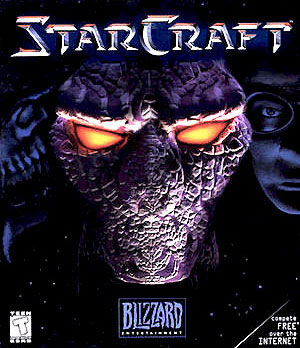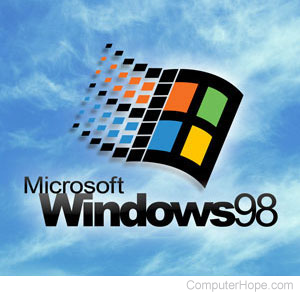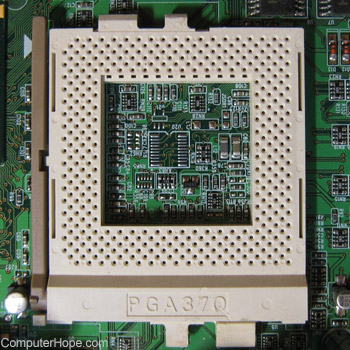Computer history - 1998
Major computer events in 1998

Google filed for incorporation in California on September 4, 1998.
Saehan's MPMan became the first MP3 player released in Japan to the public in the spring of 1998.
1998 computer and technology top terms
The following are some top computer and technology-related terms in alphabetical order that were introduced or popularized during 1998.
New computer products and services introduced in 1998
HD-ROM (high-density read-only memory) was introduced on February 2, 1998.
The V.90 modem standard was announced by the ITU (International Telecommunication Union) and agreed on February 6, 1998.
XML (extensible markup language) 1.0 became a W3C recommendation on February 8, 1998.
Yahoo! Pager was released on March 9, 1998, it was later renamed to Yahoo! Messenger in 1999.

The RTS (real-time strategy) game StarCraft was released by Blizzard Entertainment for the PC (personal computer) on March 31, 1998, and for the Mac in 1999. Selling over 11 million copies by 2009, the game was an important step in developing real-time strategy games, raising the bar for the gaming industry.
The CIH virus, also known as the Chernobyl virus, was created and began infecting computers and executed one year later, on April 26, 1999. This day was the same day as the Chernobyl accident in Ukraine on April 26, 1986.
Koko, a gorilla ape and student of American Sign Language, held the first interspecies live Internet chat on April 27, 1998.
AMD introduced its new K6-2 processor line on May 28, 1998, with speeds of 266 MHz to 550 MHz and bus speeds of 66 MHz to 100 MHz. The K6-2 processor was an enhanced version of AMD's K6 processor.
Unreal was developed by Epic MegaGames and released on May 22, 1998, by GT Interactive. The game was credited with helping to popularize the Unreal graphics engine, which is still used today with DirectX and OpenGL for graphics rendering.
Intel released the first Xeon processor, the Pentium II Xeon 400 (512 K or 1 M cache, 400 MHz, 100 MHz FSB), in June 1998.
DDR (double data rate) SDRAM (synchronous dynamic random-access memory) began being sold by Samsung in June 1998.
ATA-4 was approved by ANSI (American National Standards Institute) on August 19, 1998.
The first Google Doodle appeared on Google's web page on August 20, 1998, to celebrate Burning Man.
Intel introduced the AMR (audio/modem riser) and MDC (mobile daughter card) on September 9, 1998.
Microsoft Internet Explorer passed Netscape in Internet browser market share for the first time, as reported in a September 28, 1998, International Data Corporation report.
In October 1998, Microsoft announced that future releases of Windows NT would no longer have the initials of NT and that the next edition would be Windows 2000.
The Computer Hope website came online on November 1, 1998.
Sega released the Dreamcast console in Japan on November 27, 1998. It was later released for North America and Europe in 1999.
Baldur's Gate was released by Interplay Entertainment on November 30, 1998. The first in several role-playing games, it sold over two million copies worldwide as of 2008. It was credited with helping to revive the RPG (role-playing game) genre, and PC Gamer said the game "sets new standards for those to come."
IDLE (integrated development and learning environment) was introduced for Python on December 22, 1998.
Microsoft released Word 98 for PC and Mac in 1998.
Internet weblogs began to appear in 1998.
AVC (Advanced Video Coding) was developed and designed in 1998.
The CST (Computer Service Technician) was initiated by ETA (Electronic Technicians Association) in 1998.
Mac Excel 98 was released in 1998.
The GeekSpeak radio show started in 1998.
GnuCash was developed by Robin Clark and released in 1998.
LAME (LAME ain't an MP3 encoder) started its development in 1998.
The first version of Mandrake was released in 1998.
Maya was released by Alias Systems in 1998.
MPEG-4 was introduced in 1998.
Microsoft released FrontPage 98 in 1998.
OpenSSL began development in 1998.
PCI-X (Peripheral Component Interconnect Extended) was introduced in 1998.
QVCS (Quma Version Control System) was developed for the Amiga in 1998.
In 1998, Ritmoteca.com was launched, allowing users to search over 300,000 songs using a catalog with a jukebox-style interface.
During the demonstration of a pre-release copy of Windows 98 at COMDEX (Computer Dealers' Exhibition), Bill Gates and an assistant demonstrated how to install a scanner. During the demonstration, Windows 98 caused an error message.
Two teenage hackers launched the "Solar Sunrise" attack giving them access to over 500 military government computers.
The term gray hat was first used by L0pht in 1998.
The successor to IPv4, IPv6 was formalized by the IETF (Internet Engineering Task Force) in 1998.
SanDisk (formerly SunDisk) released the first SSD (solid-state drive) with PATA (Parallel AT Attachment) interfaces in 1998.
Sony released the High capacity Floppy Disk in 1998.
Sony introduced the Sony memory stick in 1998.
Hearings opened between Microsoft and the U.S. Department of Justice to determine whether Microsoft monopolized the software market in 1998.
U.S. Vice President Al Gore announced Blue Pacific, the world's fastest computer jointly developed by the U.S. Energy Department's Lawrence Livermore National Laboratory and IBM. Blue Pacific can perform 3.9 trillion calculations per second (15,000 times faster than the average desktop computer) and had over 2.6 trillion bytes of memory (80,000 times more than the average PC). It would take a person using a calculator 63,000 years to perform as many calculations as this computer can perform in a single second.
UDMA (Ultra Direct Memory Access) was introduced in 1998.
W3Schools came online.
Dell released the XPS R series in 1998.
Computer and technology-related events in 1998
Bill Gates was hit in the face with a cream pie by Noël Godin while entering the European Union on February 4, 1998.
Sun Microsystems began shipping the JavaStation in March 1998.
Adobe Photoshop 5.0 was released in May 1998.
3DNow! was introduced by AMD in May 1998.
AGP (accelerated graphics port) 2.0 was introduced in May 1998.

Microsoft Windows 98 was officially released on June 25, 1998.
Perl 5.005 was released on July 22, 1998.
Advanced packaging tool was released in August 1998.
Apple introduced the iMac in August 1998.
eBay made its IPO (initial public offering)) on September 24, 1998, and went up 163.2% to close at 47.375.
Amazon.com went down for a routine update and remained down for ten hours on September 30, 1998.
The DMCA (Digital Millennium Copyright Act) was passed on October 28, 1998.
Syquest Technology announced on November 17, 1998, it filed for Chapter 11 bankruptcy. All pre-petition debts and liabilities were under the bankruptcy court's jurisdiction.
Valve Half-Life, a popular FPS (first-person shooter) game, was released on November 19, 1998.
Storm Technologies converted its Chapter 11 bankruptcy case to a Chapter 7 filing on November 30, 1998.
AbiWord was released on December 1, 1998.
Chips and Technologies (C&T) was purchased by Intel in 1998.
The IEC (International Electrotechnical Commission) approved standard 60027-2 in December 1998 and defined kibi, mebi, gibi, tebi, pebi, and exbi.
Intel released the Celeron processor in 1998.
The PureBasic programming language was released for AmigaOS in 1998.
The first programming language for a computer, called Plankalkül, developed by Konrad Zuse between 1943 and 1945, was finally implemented in 1998.
The Triple Data Encryption Algorithm was introduced in 1998.
Microsoft released the 6.0 version of Visual Basic in 1998.

Intel introduced the Socket 370 socket in 1998.
Blender began being developed by NeoGeo and Not a Number Technologies in 1998.
The Erlang functional programming language became open source in 1998.
The ActionScript programming language was introduced in 1998.
David Rosenthal of the MIT (Massachusetts Institute of Technology) X Consortium released the ICCCM (Inter-Client Communication Conventions Manual) standard in 1998.
Mindscape became part of Mattel Interactive and then sold to Mattel in 1998.
The first programming language for a computer was Plankalkül, developed by Konrad Zuse for the Z3 between 1943 and 1945. However, it was not implemented until 1998.
In 1998, in a joint venture with telephone manufacturers Nokia, Ericsson, and Motorola, Psion became Symbian, Ltd., and EPOC became Symbian OS (operating system).
X.500 was introduced in 1998 by CCITT.
Computer companies and organizations founded in 1998
GOD Games was founded in January 1998.
Mozilla was initially formed on March 13, 1998 by Netscape.
AFREEY was established on April 16, 1998.
Computer Hope was founded on November 1, 1998, by Nathan Emberton.
Addonics was incorporated in 1998.
Akamai was founded in 1998.
Comodo was founded in 1998.
CSR was founded in 1998.
CyberPowerPC was founded in 1998.
eMachines was founded in 1998.
EONtronics was founded in 1998.
Palm, the makers of the Palm Pilot, left U.S. Robotics and formed its own company called HandSpring.
ICANN was founded in 1998.
InnoVISION was established in 1998.
Insyde was founded in 1998.
InterVideo was founded in 1998.
HannStar Display Corporation was founded in 1998.
Lite-on was founded in 1998.
Multiwave Digital Solutions was founded in 1998.
PayPal was founded in 1998.
The national non-profit social enterprise PCs for People was founded in 1998.
Razer was founded in 1998.
Rockstar Games was founded in 1998.
Sabrent was founded in 1998.
Skillsoft was founded in 1998 by Charles Moran.
Spamhaus was founded in 1998.
Tencent was founded in 1998.
VMware was founded in 1998.
ZTE was founded in 1998.
Computer company events in 1998
Compaq Computer purchased Digital Equipment Corporation for $9.6 billion on January 26, 1998.
Oak Technology exited the PC audio and 3D graphics market on March 31, 1998. It discontinued all product development and technical support operations for its products.
Compuserve became a wholly-owned subsidiary of AOL (America Online) in 1998.
Mirabilis, the maker of ICQ, was purchased by AOL for $287 million on June 8, 1998.
McAfee announced it would acquire Dr. Solomon's Group PLC on June 9, 1998.
Softimage Inc. was acquired from Microsoft by Avid on June 15, 1998.
Global Village Communication was sold to Boca Research in June 1998.
On August 17, 1998, Electronic Arts announced that it would purchase all outstanding stock of Westwood Studios, Inc., and certain other studio assets of Virgin Interactive Entertainment, Inc. The cash transaction was valued at $122.5 million.
The Learning Company announced the completion of its merger with Broderbund Software on August 31, 1998. As a result of the merger, Broderbund became a wholly-owned subsidiary of The Learning Company.
Nortel acquired Bay Networks on August 31, 1998.
Caldera announced it would create two subsidiaries on September 2, 1998, CSI (Caldera Systems, Inc.) (that became Caldera International) and Caldera Thin Clients.
Trilobyte was forced to close its doors on September 15, 1998, after no publishing deals and void of financial recourses.
MindSpring Enterprises, Inc. announced it had completed the acquisition of SpryNet from America Online, Inc. on October 15, 1998.
Microsoft acquired the advertising company LinkExchange for $265 million on November 6, 1998.
AOL announced it would acquire Netscape Communications for an estimated value of $4.2 billion on November 24, 1998.
Virgin became part of Irvine Games Inc. and ceased operations in November 1998. However, the business of Virgin Interactive continued to be conducted through its London headquarters.
JTS filed for bankruptcy on December 11, 1998.
The Learning Company announced it had entered into a definitive agreement with Mattel, Inc. for the merger of the two companies on December 14, 1998.
Google hired Craig Silverstein as its first employee in 1998.
IBM acquired CommQuest Technologies, Inc., which designed and marketed advanced semiconductors for wireless communications applications. CommQuest became a unit of IBM's Microelectronics Division.
In 1998, InterNIC, with IANA (Internet Assigned Numbers Authority), was put under the control of the ICANN (Internet Corporation for Assigned Names and Numbers).
Amazon purchased IMDb (Internet Movie Database) in 1998.
APS Tech was acquired by LaCie in 1998.
Award, well known for its computer BIOS (basic input/output system), became part of Phoenix, another company well known for its computer BIOS.
Digicom Systems Inc. changed its name to Broadxent, Inc. in 1998.
Lycos purchased Angelfire in 1998.
In 1998, Rockwell Semiconductor Systems announced its new name as Conexant Systems Inc.
MicroProse joined Hasbro Interactive in 1998.
STB Systems was acquired by 3dfx Interactive Inc. in 1998.
Virgin Interactive agreed to buyout from Interplay Entertainment and acquired 43.9% of Virgin Interactive in 1998. This agreement granted Interplay distribution rights in North and South America.
Internet domains that came online in 1998
The domain computerhope.com came online on July 14, 1998.
The domain ask.com came online on October 19, 1998.
Discontinued products and services in 1998
AOL announced it would no longer support the Netscape browser on February 1, 1998.
Development for the Apple Newton OS and the Newton platform officially ended on February 27, 1998.
CD-i (compact disc interactive) was discontinued in 1998.
Computer pioneer deaths in 1998

Richard Hamming passed away on January 7, 1998 (Age: 82).
Trevor Pearcey passed away on January 27, 1998 (Age: 79).
Reynold Johnson passed away on September 15, 1998 (Age: 92).
David Evans passed away on October 3, 1998 (Age: 74).
Jonathan Postel passed away on October 16, 1998 (Age: 55).
Thomas Flowers passed away on October 28, 1998 (Age: 92).
